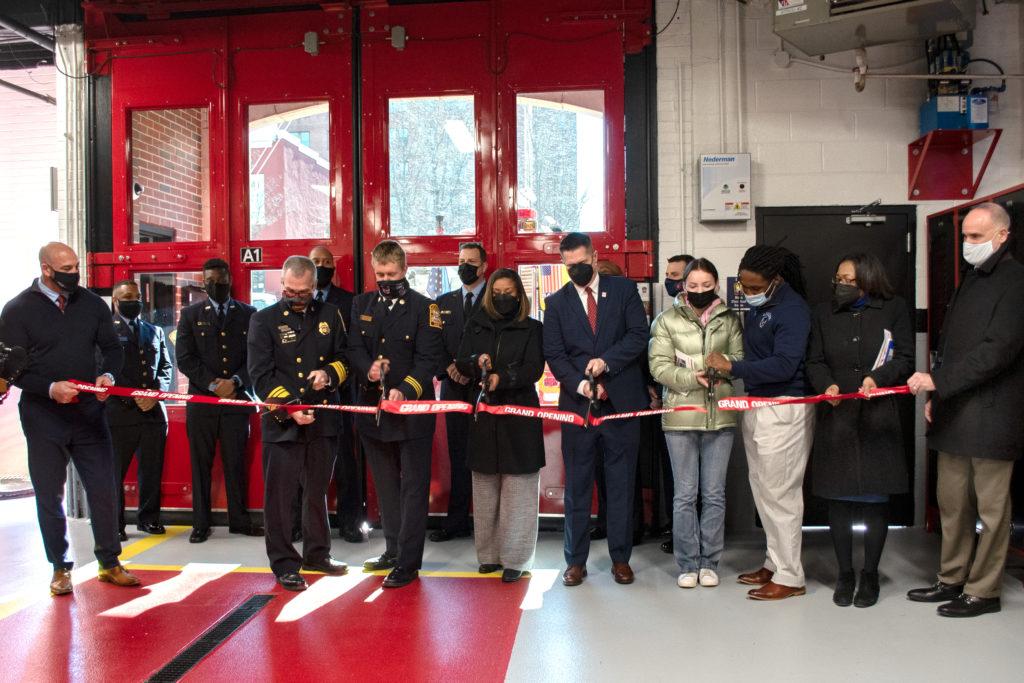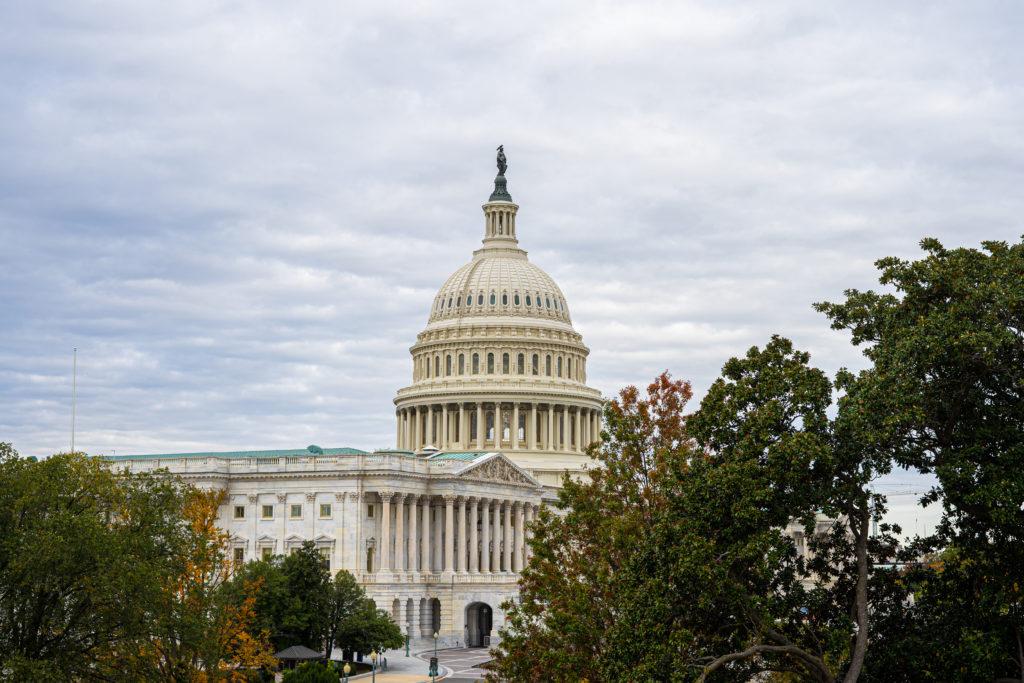D.C. Fire and Emergency Medical Services celebrated the reopening of Foggy Bottom’s Engine 23 Firehouse with a ribbon-cutting ceremony Tuesday after renovations forced an extended closure of the site last year until December.
The District funded $2.36 million in renovations that will help preserve the 112-year-old building for continued emergency use to promote heightened safety for the local community and firefighters stationed in the facility, according to a release issued by FEMS Tuesday. About 50 people gathered at the event, which included remarks from the District’s fire chief, the deputy mayor for public safety and justice and GW’s executive vice president and chief financial officer Mark Diaz before firefighters offered tours of the firehouse for visitors.
John Donnelly, the chief of the department, said FEMS invested in the renovation to enhance safety throughout Foggy Bottom and across the District. He said the building’s history and central location as the fire engine assigned to the Martin Luther King Jr. Memorial, U.S. State Department, Lincoln Memorial and other spots in Northwest D.C. make the firehouse a centerpiece of the community.
“This firehouse was built about the same time that Foggy Bottom became home to George Washington University,” Donnelly said during the ceremony. “It was clearly a commitment to safety in this community. That commitment remains in place with this renovation.”
[gwh_image id=”1158233″ credit=”Danielle Towers | Assistant Photo Editor” size=”embedded-img” align=”none”]The Engine 23 Firehouse reopened in December after recent renovations kept the site closed for much of 2021.[/gwh_image]
The renovations upgraded sleeping quarters, lighting, kitchen equipment, HVAC operations, ventilation equipment and a lactation room within the building, according to the release.
Donnelly said local 20th century architect Snowden Ashford designed the two-story red brick building to hold a horse-drawn fire fighting steam carriage for its opening in 1910 before its modern-day use. Now the smallest firehouse in D.C., Donnelly said Engine 23 is one of the only firehouses in the city with spiral staircases, which were first intended to prevent horses from climbing.
Donnelly said Engine 23 also needs to line up its firetruck and ambulance one in front of the other because of the limited space – making it one of the only firehouses to not place the two side by side, each with their own driveways.
[gwh_image id=”1158234″ credit=”Danielle Towers | Assistant Photo Editor” size=”embedded-img” align=”none”]After the ribbon-cutting ceremony, firefighters offered tours of the firehouse for visitors to scope out the facility, including the historic spiral stairs.[/gwh_image]
Philip Stevens, the captain of Engine 23, joked that the reopening of the alleyways on each side of the firehouse, which students use to walk between Kogan Plaza and G Street, could be the most major change that students notice to come out of the renovations at the site.
“Of all the upgrades and improvements to the firehouse, the alley on this side of the firehouse may be the most important feature,” he said. “It’s a popular route of travel for students going to and from class, and I think we’ve got more comments that the alley is open now than anything else.”
Stevens said the improved facilities will ensure Engine 23 will continue to save lives during past emergencies that have drawn responses from the station, like the 1922 Knickerbocker Theater fire that killed 98 people near modern-day Adams Morgan, the 9/11 attack on the Pentagon and a Q Street fire where firefighters saved a man from a burning apartment this past December.
“Every day, members of Engine 23 perform their jobs in a selfless and professional manner that’s come to define the District of Columbia fire department,” Stevens said.
[gwh_image id=”1158236″ credit=”Danielle Towers | Assistant Photo Editor” size=”embedded-img” align=”none”]The District funded $2.36 million in renovations that include upgraded sleeping quarters, lighting, kitchen equipment, HVAC operations, ventilation equipment and a lactation room within the building.[/gwh_image]
Stevens said members of Engine 23 wanted to preserve parts of the building’s history that were at risk of being destroyed during the renovation process, and officials did extensive roof and exterior work to protect the building’s historic facade. He said although the station first planned to throw out a large door from the second floor that was originally used to transport hay when horses were stabled in the firehouse, one firefighter preserved it and turned it into a table that is now placed in the building’s kitchen.
“Keeping the history alive is very important in this job, and we tried to do that as best we could,” he said.
Diaz, GW’s executive vice president and CFO, thanked the firefighters of Engine 23 for their presence on campus and voiced his support for GW’s relationship with the fire department.
“Safety is second to none at GW,” Diaz said. “I can’t think of a better symbol in the virtual center of our campus as a firehouse – a newer one at that – to align with our safety standard.”







